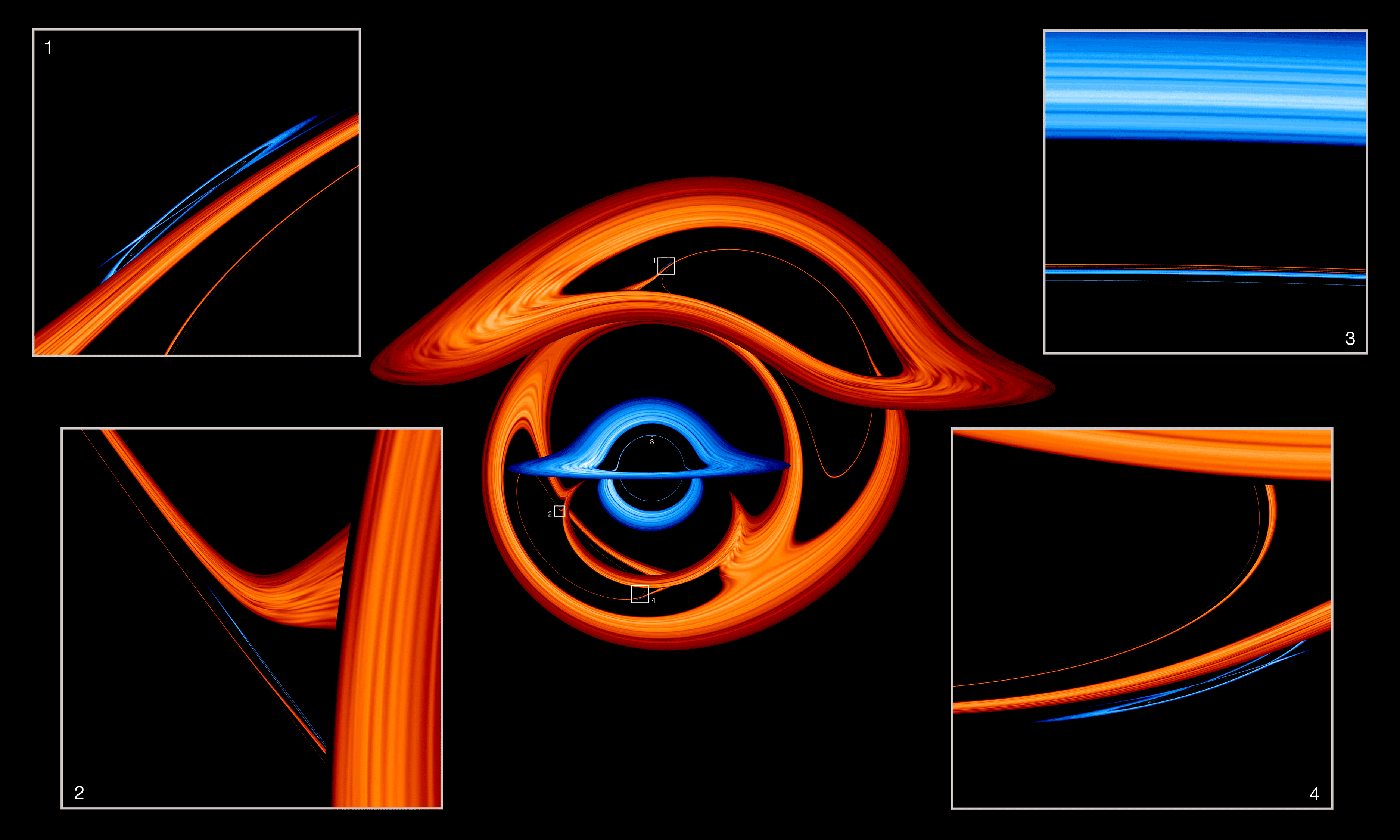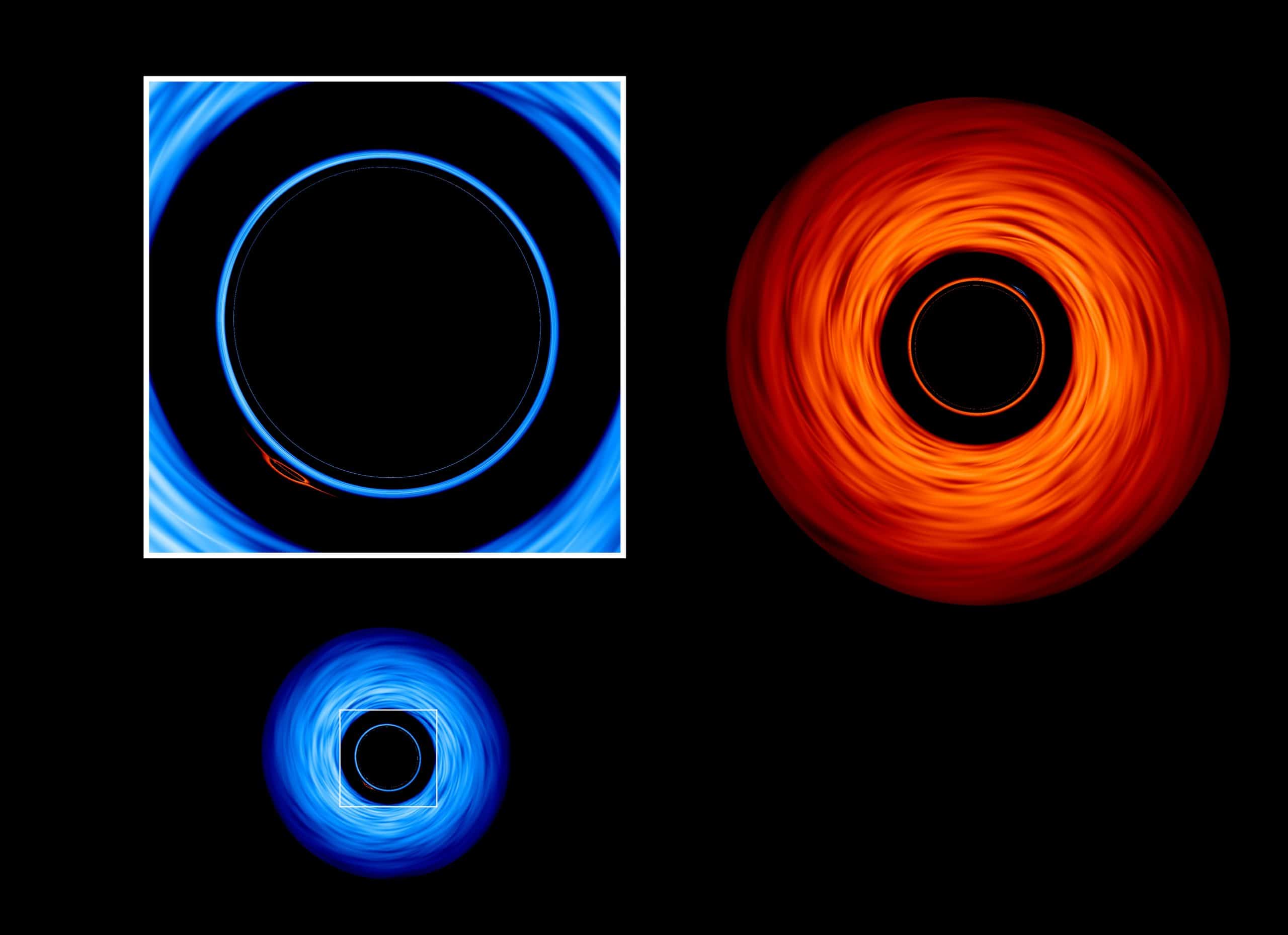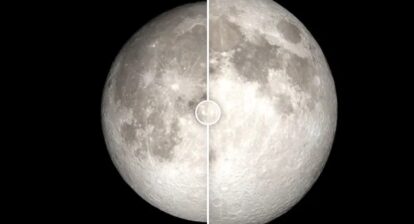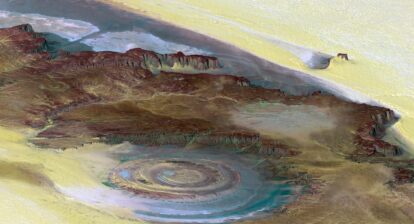An amazing new visualization of two black holes dancing around each other has been created by NASA. The movie also highlights how the black holes distort and redirect light emanating from the accretion disk – a whirlpool of hot gas that surrounds each one.

Black hole binary gravitational lensing. Credit: NASA’s Goddard Space Flight Center/Jeremy Schnittman and Brian P. Powell
These black holes are a million times the mass of our Sun – the larger one with 200 million solar masses and its smaller companion weighing about half of that. According to astronomers, in such binary black hole systems accretions disks could be maintained for million of years. The blue and red colours of the black holes not only differentiate between the two (the red disk orbits the larger black hole) but also allude to the difference in temperatures. Gas around lower-mass black holes experiences stronger effects that produce higher temperatures, so the UV light emitted by the blue disk is at a slightly higher temperature.
The visualization is from the orbital plane, and this view gives each accretion disk a warped view – a common characteristic. As as explained on NASA’s website “as one passes in front of the other, the gravity of the foreground black hole transforms its partner into a rapidly changing sequence of arcs. These distortions play out as light from the accretion disks navigates the tangled fabric of space and time near the black holes.”

This image shows the warped view of a larger supermassive black hole (red disk) when it passes seen almost directly behind a companion black hole (blue disk) with half its mass. The gravity of the foreground black hole transforms its partner into a surreal collection of arcs. Insets highlight areas where one black hole produces a complete but distorted image of the other. Light from the accretion disks produces these self-similar images as it travels through the tangled fabric of space and time near both black holes. Credit: NASA’s Goddard Space Flight Center/Jeremy Schnittman and Brian P. Powell
The warped image is due to the gravitational distortion altering the paths of light coming from different parts of the disks. Furthermore “rapid motion of gas near the black hole modifies the disk’s luminosity through a phenomenon called Doppler boosting – an effect of Einstein’s relativity theory that brightens the side rotating toward the viewer and dims the side spinning away. Also visible is a phenomenon called relativistic aberration, where the black holes appear smaller as they approach the viewer and larger as they move away.
(Watch Black Hole Shredding A Star)
From above, both black holes display small images of their partners that circle around them every orbit. NASA says that “these images are actually edge-on views. To produce them, light from the black holes must be redirected by 90 degrees, which means we’re observing the black holes from two different perspectives – face on and edge on – at the same time. Zooming into each black hole reveals multiple, increasingly distorted images of its partner.”

Black hole binary simulation face on view. Credit: NASA’s Goddard Space Flight Center/Jeremy Schnittman and Brian P. Powell
The visualization was created by astrophysicist Jeremy Schnittman at NASA’s Goddard Space Flight Center in Greenbelt, Maryland teaming up with Goddard data scientist Brian P. Powell to use the Discover supercomputer at the NASA Center for Climate Simulation (using just 2% of Discover’s 129,000 processors, these computations took approximately a day). The two scientists computed the path taken by light rays from the accretion disks as they made their way through the warped space-time around the black holes.
Credit: NASA’s Goddard Space Flight Center/Jeremy Schnittman and Brian P. Powell
Music: “Gravitational Field” from Orbit. Written and produced by Lars Leonhard.
The selected Optin Cat form doesn't exist.






